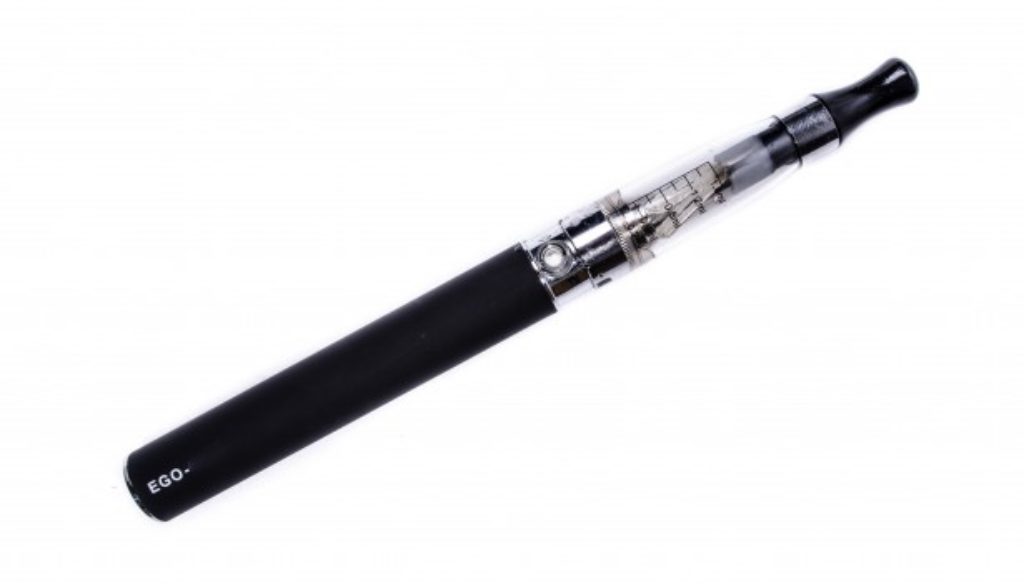Another Gross Reason to Put Down the E-Cigarettes
By American Lung Association
Scientists have been working hard to debunk the belief that e-cigarettes are less harmful than traditional cigarettes. A recent study published in the American Thoracic Society’s American Journal of Respiratory and Critical Care Medicine is giving the mounting concern against vaping some traction. The news adds to the growing list of health problems facing those who use e-cigarettes, including popcorn lung, wheezing and nicotine addiction.
The authors of the recent study found that e-cigarettes with nicotine hampered mucus clearance. Meaning that not only are your lungs filling with toxic chemicals when you vape, but it also makes it harder to clear them. Specifically, the researchers found that vaping with nicotine impairs ciliary beat frequency, dehydrates airway fluid and creates more viscous phlegm. This “sticky mucus” can get trapped in the lungs, which could leave your lungs more vulnerable to illness and infection. In fact, “mucociliary dysfunction,” the technical term for this phenomenon, is a feature of chronic lung conditions like COPD and asthma.
The study, built on previous clinical reports, also found that nicotine use blocks the transient receptor potential ankyrin 1 (TRPA1) in human and sheep cells. “The question was whether vape containing nicotine had negative effects on the ability to clear secretions from the airways similar to tobacco smoke,” senior author Matthias Salathe, M.D., chair of internal medicine and a professor of pulmonary and critical care medicine at the University of Kansas Medical Center explained in a news release.
The results were overwhelming. Not only did the study support earlier findings, but it suggests that “a single session of vaping can deliver more nicotine to the airways than smoking one cigarette.” Moreover, the absorption into the bloodstream is lower, so the airways are exposed to these high nicotine levels for a longer period of time.
“This is an interesting study because it shows some of the ways e-cigarettes can be damaging and can lead to symptoms similar to traditional cigarettes,” Christy Sadreameli, M.D., MHS, an American Lung Association volunteer medical spokesperson, commented. “Many people are looking to e-cigarettes as harm reduction, but the key takeaway is that there is increasing evidence that they [e-cigarettes] are also harmful. Just because it is not in smoke form doesn’t mean it’s safe. Really any way that nicotine is breathed in impairs receptors.”
Sadreameli added that in 2016 the Surgeon General concluded that even secondhand emissions from so-called e-cigarette “vapor” contain:
- Nicotine
- Ultrafine particles
- Flavorings such as diacetyl, a chemical linked to serious lung disease
- Volatile organic compounds such as benzene, which is found in car exhaust
- Heavy metals, such as nickel, tin, and lead
Unfortunately, a growing number of teens have jumped on the vaping trend thanks to sleek new designs and flavoring. “The study also suggested that cinnamon flavor can affect the receptor. So, you can imagine that if you have a cinnamon flavored nicotine e-cigarette it could have an even more damaging effect on mucociliary clearance,” Dr. Sadreameli said.
Young e-cigarette users are at risk of developing chronic bronchitis, which can include symptoms of cough, chest congestion, shortness of breath, and mucus production on top of the list of other illnesses. And previously, the Surgeon General found that the nicotine in e-cigarettes can harm the developing lungs of youth and alter adolescent brain development. This is why the American Lung Association is urging you to talk to your teens about vaping and the disturbing new finding that may help bolster your argument and deter them from picking up that e-cigarette.
The Lung Association’s new initiative, The Vape Talk, is an easy resource for parents looking to learn more about the vaping trend and how to talk to their teenagers about saying no. Last year alone vaping increased by a staggering 78 percent among high schoolers, and 48 percent among middle schoolers. So, don’t wait! Learn more about how to talk to your kids about e-cigarettes:

